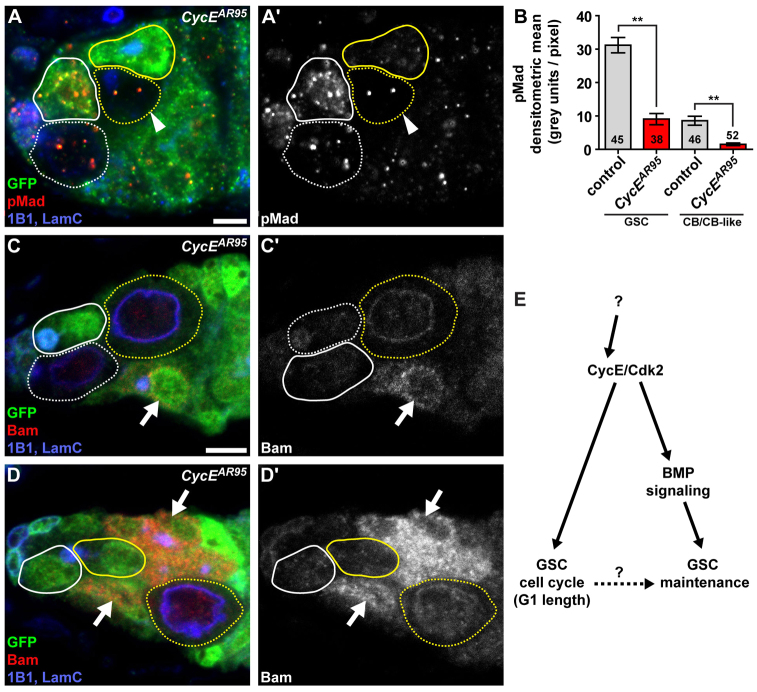Fig. 7.
CycE AR95 GSCs have reduced BMP signaling, but do not fully differentiate. (A,A′) CycEAR95 mosaic germaria showing GFP-negative clones. pMad (red; greyscale image in A′) is a BMP signaling marker. Arrowheads indicate a CycEAR95 cystoblast-like cell. (B) Average level of pMad expression in control or CycEAR95 GSCs in mosaic germaria. Numbers in the bars represent the number of GSCs analyzed. Bars represent s.e.m. **P<0.01. (C-D′) CycEAR95 mosaic germaria. Bam (red; greyscale image in C′,D′) is an early differentiation marker. Arrows indicate GFP-positive wild-type germline cysts that express high levels of Bam. In A,C,D, GFP (green) indicates control cells, 1B1 (blue) indicates fusomes, and LamC (blue) indicates cap cell nuclear envelopes. Control wild-type GSCs have solid white outlines; CycEAR95 GSCs are indicated by dashed white outlines; control cystoblasts are indicated by solid yellow outlines; CycEAR95 cystoblast-like cells are indicated by dashed yellow outlines. (E) Model for genetically separable roles of CycE/Cdk2 in regulating the female GSC cell cycle and maintenance. CycE function promotes GSC responsiveness to niche BMP signals; in addition, high CycE expression during G2 and M probably results in rapid entry into S following M phase, which limitis excessive growth during G1. An indirect contribution of CycE/Cdk2 to GSC function through its effect on the cell cycle is also possible. It remains unknown what mechanisms lead to the atypical CycE pattern in GSCs. Scale bars: 5 μm.

